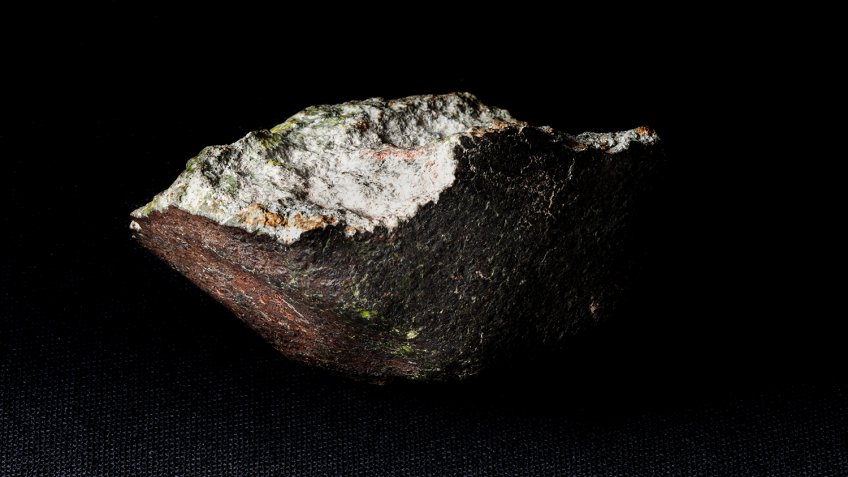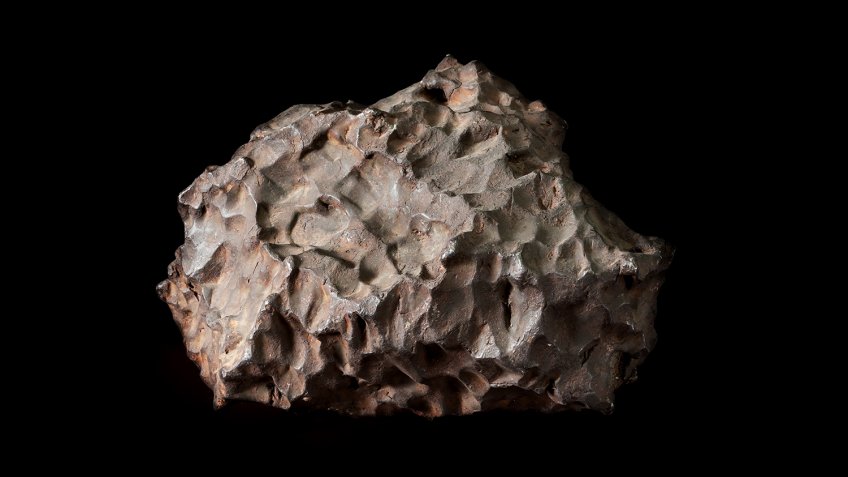
Each year over 16 tons of large-sized meteorites fall down onto the surface of Earth. But until the end of the 18th century, scientists did not believe that meteorites were simply falling down from the sky. All because of the beliefs of the Catholic Church, stating this was impossible. Yet in the first millennium BC, coins with images of tailed comets were circulating among citizens of the Roman Empire.
However, at the beginning of the 19th century, a ’cosmic rain’ took place in L’Aigle, a small commune in France located not far from Paris. Since numerous people observed the phenomenon, the French Academy of Sciences was forced to avow that it had been caused by the ’rocks from the sky’.
Half a century back, Jacob Medvedev and Johann Mettich, local blacksmith and miner who were searching for iron ores on the territory of Krasnodar Krai, Russia, discovered by accident the first-ever Russian meteorite of 700 kg in weight. At the time no one knew about stones from space, and the discoverers could not acknowledge the value of their find, which became known later as ’Pallas Iron’. The composition and structure of the sample were studied only five years later, upon its delivery to St. Petersburg, resulting in a revelation. As the specimen differed from all known earth materials, the discovery was soon followed by a scientific justification explaining how extraterrestrial substance could land onto Earth. Now all meteorites of this kind, consisting of olivine grains intertwined with iron, are called pallasites.
One of the world’s oldest and Russia’s largest meteorite collections is on display at the Mining Museum in St. Petersburg, Russia. An extensive description of the collection was made by Edita Obolonskaya in her work «Собрание метеоритов горного музея Санкт-Петербургского горного университета» (available in Russian only). Samples of the iconic ’Pallas Iron’ and one of the three thousand fragments of the ’rain’ that fell on L’Aigle back in 1803, presented by the Natural History Museum, are now housed inside the Museum.
Other well-known collection’s exhibits are meteorites Augustinovka and Borodino. The latter one, while by its composition belonging to the most widespread class of stony meteorites, has a fascinating history to tell. It fell down just the day before the Battle of Borodino, fought in September 1812, took place. The stone touched down at the location of the Russian artillery troops; therein it was found by a sentry who handed it over to his superior. Once the top brass got to learn of the incident, they issued a decree prohibiting to mention the fall of an unknown object. The officers were afraid that news spreading through word of mouth would make soldiers consider it a bad omen and create panic. The rock was afterwards passed over from one owner to another numerously, with its significant part soon ending up in the Museum.
Augustinovka, iron meteorite, is the second-largest in the Museum’s collection, and there is a story behind it too. At the end of the 19th century, residents of one settlement within the Yekaterinoslav Governorate discovered a large piece of iron at the bottom of a pit from which they were extracting clay. The most striking about that find was that the rock was unmovable. As soon as the gossip about it reached St. Petersburg, it was decided to hold a thorough investigation of the specimen and deliver a four-hundred-kilogram weighing meteorite to the Museum.
Iron meteorites, contrary to the stony ones, fall onto the ground much rarer. They account for only six per cent of all meteorites ending up on our planet. In contrast, achondrites constitute about 92% of discoveries and mesosiderites - 2%.
According to the legends, Sumerian and Indian kings used to make weapons from ’space iron’, believing they would thus pass magical properties onto them. As the story says, Tamerlane’s sword was also made of the ’celestial stone’. And Alexander I, the Emperor of Russia, had in his possession a skewer made of an alloy with addition of ’superterrestrial iron’.
Meteorites of the rare group are mostly composed of iron and, to a lesser extent, of nickel, cobalt, phosphorus, carbon, sulphur, and copper. Many of space rocks have not, in fact, yet been studied in detail. And in 2020, while examining the Augustinovka meteorite, a new discovery happened. The new mineral occurring in the meteorite was named ’xenophyllite’. Supposedly it may completely transform the battery industry.
The largest sample of the Museum’s meteorite collection is a rock weighing 450 kg that was found at the Sikhote-Alin after the meteor shower. This fragment is one of the ten largest left after the fall of the iron meteorite in 1947, the event that was seen in southeastern Russia, particularly in Khabarovsk and Primorsky krais. On a sunny morning, inhabitants of those territories noticed a brightly glowing fireball fast approaching Earth, and with its moving out of sight they heard the sounds of a loud crash and rumbles. Then the trail in the form of a smoke strip emerged into the sky and remained visible for the whole day. It became known later that the falling of the meteorite could be seen within the area exceeding 300 kilometres in radius, with the sound being heard at an even greater distance. The landing area was spotted a day later by pilots flying at the height of seven hundred metres.
The Sikhote-Alin meteor shower is a unique natural phenomenon. The number of samples that were gathered and their cumulative weight is by far the largest-ever. The largest found fragment weighs 1,745 kilograms.
In addition to those items mentioned, there are other unique objects showcased at the Mining Museum. A forty-kilogram specimen of hailstone that fell onto Kunashak, Russia, is housed here. Next is a piece of the Peekskill meteorite, found in the US, that smashed through the trunk of a car. Then there are parts of the Chelyabinsk meteorite on display, as well as a two-part fragment of the Canyon Diablo meteorite, which is a remnant of a massive asteroid. It fell in Arizona, the US, and left a crater of over a kilometre in diameter and 174 meters in depth. Another notable exhibit is the Novy Urey meteoric stone, belonging to a group of rare meteorites. This one is quite special to Russian mineralogists since they were the world’s first to find diamond grains and some other ’celestial rocks’ in it.









